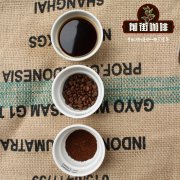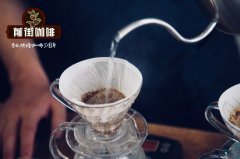Colombian coffee features taste Colombian coffee history Colombian coffee story of Colombian coffee

Professional coffee knowledge exchange More coffee bean information Please pay attention to coffee workshop (Weixin Official Accounts cafe_style)
Washed Arabica from Colombia
Today, Colombia is considered one of the most advanced specialty coffee producing areas in the world. Temperature, altitude, solar radiation, and water availability all affect water quality, but soil is probably the most important component of Colombia because volcanic ash provides enough organic matter. This enables farmers to grow rich coffee, often including favorable cup test characteristics: clean aroma, high acidity and moderate body.
Colombia flavor
Specialty coffees from Colombia are usually full-bodied with bright, vibrant acidity. Intense aromas with sweet, lemon fruit, malt, black cocoa and nutty notes.
Most coffee was grown between 1200 and 1800 AD. But in some areas it rises above 2000 m.a.s.l. Common varieties cultivated by smallholders are Typica, Bourbon, Caturra and Castillo. Castillo is popular in Colombia because of its high yield.
History of Colombia Coffee
Colombia began exporting coffee in 1835. Coffee was introduced to Colombia in the 16th century when Jesuit priests spread coffee seeds throughout Colombia. At first, there was great resistance to growing coffee. Mainly because the first harvest took five years. Legend has it that Jesuit priest Francisco Romero offered people four coffee trees instead of regular penance.
Federacion Nacional de Cafeteros (National Coffee Federation)
The founding of the National Coffee Federation in 1927 was an important moment in the history of Colombia coffee. Colombia coffee growers began uniting their forces to defend their rights and improve the quality of life of coffee-producing families. Each city has its own elected spokesperson representing the local community. It is considered one of the largest agricultural NGOs in the world.
Family is the engine of the Colombia coffee market. These families are located in 17 coffee areas in Colombia: Calda, Cauca, Cesar, Narino, Meta, Huila, Tolima, Quindio, Risaralda, Antioquia, Valdel Cauca, Candinamarca, Guagira, Madeline, Boyaca, Sandel Norte. The average smallholder family in Colombia owns 2 to 5 acres of land to grow coffee.
Important Notice :
前街咖啡 FrontStreet Coffee has moved to new addredd:
FrontStreet Coffee Address: 315,Donghua East Road,GuangZhou
Tel:020 38364473
- Prev

Costa Rican coffee beans hand-flushed to share honey how to make coffee beans taste good
Professional coffee knowledge exchange more coffee bean information please follow the coffee workshop (Wechat official account cafe_style) Qianjie coffee musicians series introduction a Mozart first introduce today's protagonist Mozart! This bean, whether it is dry or wet, is amazing. After all, few beans have such a special aroma. And its treatment is also very intentional.
- Next

The characteristics of Sumatran Coffee the story of Sumatran coffee beans introduction to Sumatran Coffee producing areas
Professional coffee knowledge exchange more coffee bean information please follow the coffee workshop (Wechat official account cafe_style) Sumatran specialty coffee Indonesia was named the portrait country of the year by SCA, attracting a lot of people's attention to this unique coffee country, of course. The combination of rich tropical microclimate and semi-washing treatment makes Indonesia, especially
Related
- Beginners will see the "Coffee pull flower" guide!
- What is the difference between ice blog purified milk and ordinary milk coffee?
- Why is the Philippines the largest producer of crops in Liberia?
- For coffee extraction, should the fine powder be retained?
- How does extracted espresso fill pressed powder? How much strength does it take to press the powder?
- How to make jasmine cold extract coffee? Is the jasmine + latte good?
- Will this little toy really make the coffee taste better? How does Lily Drip affect coffee extraction?
- Will the action of slapping the filter cup also affect coffee extraction?
- What's the difference between powder-to-water ratio and powder-to-liquid ratio?
- What is the Ethiopian local species? What does it have to do with Heirloom native species?

